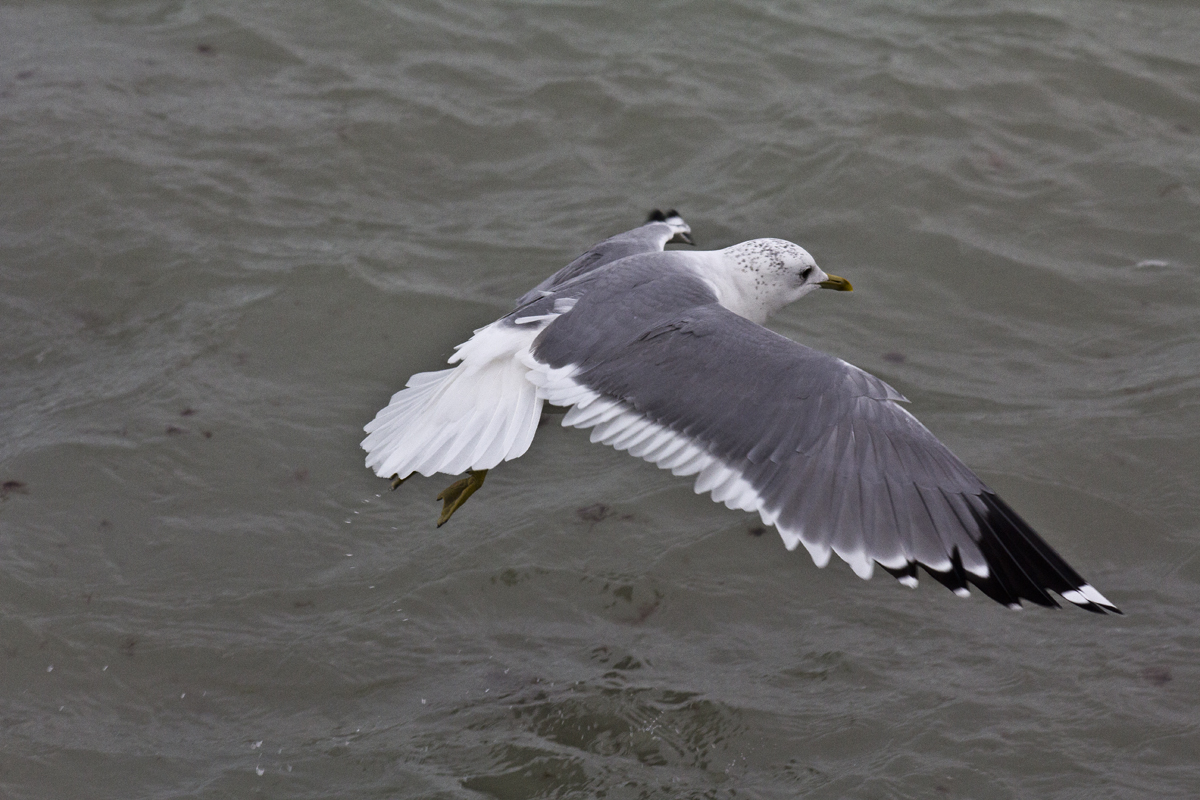 Mew Gull Larus canus canus; heinei; kamtschatschensis; brachyrhynchus
Mew Gull Larus canus canus; heinei; kamtschatschensis; brachyrhynchus
(last update: March 12, 2012)
Mew Gull heinei adult, December 29 2012, Aktau, Kazakhstan. Picture: Kadirov Aisagali.
Please visit Birds of Kazakhstan.
In the field some heinei can be identified in a group of Mew Gulls in W Europe, based on careful examination of open wing differences between heinei vs canus. In general, the wingtip pattern for heinei has more pigmentation and the grey tone on upperparts is distinctly darker. Subbtle differences in adult plumage:
(i) heinei more often show a deep black full subterminal band on P5; where canus normally has a thin, uneven or broken band, or black only on one web.
Sometimes, adult heinei may show a black spot on the outer-web of P4;
(ii) in heinei, black pigmentation extends all the way to the primary coverts on P8, where canus only has this black reaching 50-75% of the primary;
(iii) heinei shows extensive black on P7 (more than 80% of the way to the primary coverts); while canus has mostly less than 50%;
(iv) in heinei a long black 'bayonet' on the outer web of P6 extends for approximately 65% of the way to the primary coverts, while the maximum in Chris Gibbin's canus sample is 53%, with most having black only 20-40%.
In this bird there is a slight bayonet on P7, not on P6.
Latitude location 43.40.27 N.

